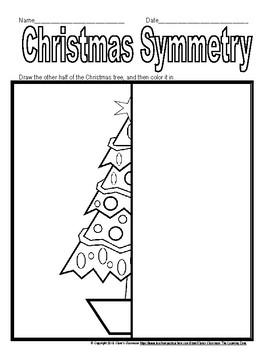Its that time of year again when the lights are up, songs are being sung, decorations are being hung and joy is absolutely everywhere. What is this time you ask? it is indeed Christmas. It is obvious that Christmas is a time for giving and thinking of loved ones, but after a recent blog post from Andy Hughes (titled ‘Christmaths’), I have been inspired to blog about how maths can be incorporated into Christmas in fun and inventive ways. In addition, it has made me want to uncover the fundamental principles of mathematics in Christmas.
Hughes (2015) in his blog post ‘Christmaths’ describes mathematics in Christmas. He states that snowflake’s are a ‘fractal (a fractal is a shape that contains similar patterns which recur throughout the shape on a smaller scale)’. In addition he identifies that zooming in on a snowflake just produces more details and can splurge up fundamental processes such as scaling, shape and ratio – very fundamental processes. On a larger scale, lets take the fundamental process of shape. As I have mentioned numerous times before, maths is all around us. In a seasonal sense, we only need to look at our Christmas trees to see that shape is evident. For example, Christmas baubles. These are spherical in shape. The star on top of the tree also shines bright, but is still a shape. However, what is the maths behind a Christmas tree? It could be suggested that there is maths in assembling a Christmas tree (especially and artificial one. For example, you will need to have the right length of Christmas tinsel to pass around the tree – the mathematical concept of length and measurement. In addition, you will need to have enough Christmas baubles in order for the tree to be symmetrical. Talking about symmetry, this can be used widely as examples to help children understand this concept. For example, trees are symmetrical, as are snowmen, stars, snowflakes.. the list goes on. This can be used as a consolidation activity and it effectively ties Christmas into mathematics.


Moreover, Christmas time in the classroom should be an exciting and engaging time for children. So why can’t we use maths within Christmas? Even if it is not directly from a maths lesson. Board games are a fantastic way to do this and they challenge a range of mathematical concepts. Take monopoly, for example. Now, I am not going to lecture you on how to play monopoly as I am sure we all have a ‘profound understanding’ of how to play it. However, what does monopoly all boil down to? Money. In order to play this game, children must have a basic knowledge of money and will have to subtract or add together money when they land on someone’s property or even if they pass go! I find this to be pretty incredible – its fun and engaging, but you are learning at the same time… Do you see where I am going with this? Take snakes and ladders – counting is the fundamental principle there. Cluedo – problem solving to find out who really committed the crime. Even in dominos there is a basic element of counting. Probability is also another fundamental principle that can be seen in games that use dice – what is the probability of landing on a six? Lets be honest, which games do not have dice in them?
It is obviously apparent that maths is incorporated into Christmas profoundly. If you even think about presents under your tree – some are cuboidal and some are spherical. Shape is such a common theme within Christmas. So when your opening your presents this year, have a second thought about how maths is incorporated into Christmas – it may even inspire you to write a blog post!!!!

reference:
Hughes, A. (2015) Christmaths. In a Class of my Own. Last accessed 06/12/15. Available at https://blogs.glowscotland.org.uk/glowblogs/ajhportfolio/2015/12/02/christmaths/




 .
.
 Picture Courtesy of apple.
Picture Courtesy of apple.

